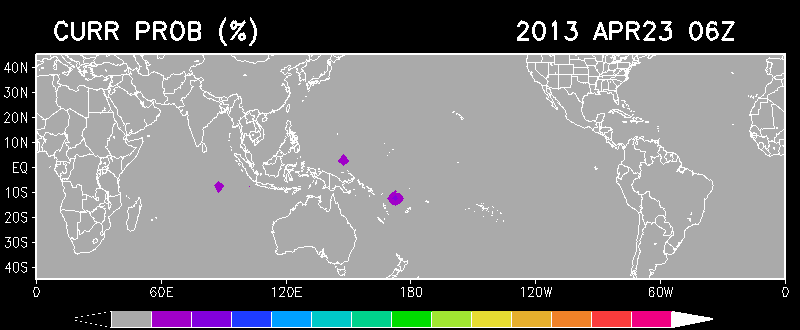Products Last Updated 2013 APR 23 06UTC |
|||
|---|---|---|---|
 |
|||
 |
|||
 |
Tropical Depression / Tropical Storm |  |
Hurricane |
- TC FORMATION AREAS OF INTEREST:
- Identifies regions of relatively-enhanced summation TC formation probability (see below). To dinstinguish between TC formation and non-formation cases, uses nearby TC formation (see below). Hence, provides a broad-scale "first guess" at areas with the potential for TC formation. The threshold summation probability values that define each potential category were chosen so that 100%/75%/25%/5% of dependent sample set cases meet or exceed the threshold values. Basins were treated independently, so corresponding dependent sample set occurrence frequencies may vary by basin.
 |
TC Formation Area of Interest Category |
Occurrence Frequency (ATLC / EPAC / WPAC) |
Dependent Cases Included |
||
|---|---|---|---|---|---|
| Possible (Blue) | 4% | 7% | 5% | 75% | |
| Fair (Orange) | 10% | 26% | 12% | 25% | |
| Good (Red) | 20% | 46% | 18% | 5% | |
- Nearby TC Formation
- Describes TC formation that occurs within 20° of a given point. This is less stringent than the 5° criterion used by the main TC Formation Probability product.
- Summation TC Formation Probability
- The sum of the TC formation probabilities at all grid points within a 20° lat by 20° lon subregion centered on that point.
- Occurrence Frequency
- For all points exceeding a given summation probabilty threshold, the percent of those cases that resulted in a "nearby" TC formation (as defined above).



